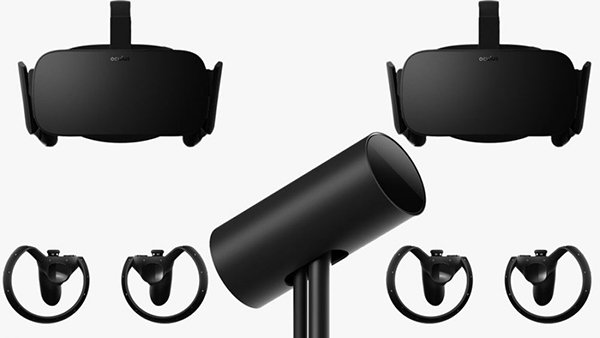The advance reservation of Oculus Touch was officially launched on October 10. For Oculus, this is a very important moment; and it is also true for the ongoing "handle war" in the VR world. Oculus’s biggest competitor is HTC Vive, and the fierce debate over the success of the two VR headlines has been a storm since the time of this year’s release. One of the most important features of the Vive system is its "room tracking" VR technology; that is, players can walk, turn around, and explore in a predetermined space.

Oculus Touch Set
From the time of publication, Rift cannot do this. For example, if the player's movement exceeds the range of the sensor during use, it is easy to trace the failure. The architecture of Oculus's constellation tracking system has always seemed to have the potential to achieve room tracking technology. Today, with the release of Touch, this potential has been fully utilized. Oculus’s CEO Brendan Iribe (Brandon Iriba) publicly stated that Rift can implement room tracking once the Touch is launched. But in reality, it is more complicated than this.
To unlock the power of Rift's room tracking, we have listed the following players' required content list:
The first step: handle

Oculus Touch handle
In order to complete the Rift's room size setup, the first thing you need is the Oculus Touch. These hand tracking handles are a miracle of VR design, and are no less favourable than Vive. With Touch, players can pick up digital objects, shoot in virtual worlds, play with virtual friends, and more.
A pair of handles costs $199 and an additional position tracking sensor will be harvested. In this way, with the sensor configured by Rift itself, the player has two sensors. So, like Creed Bratton (Crete Bratton) would say, there is one difference.
Step Two: Sensor

Oculus Touch sensor
Oculus will soon begin selling VR tracking sensors as a stand-alone product. Price 79 dollars, and equipped with USB data cable.
From Iribe's presentation, it can be seen that at least three Oculus sensors are required to achieve a truly open room-scale experience. To demonstrate this, at the recent Oculus Connect 3 conference, numerous demos were run through a three-sensor setup to run a room-scale experience. Although theoretically, it is possible to connect different numbers of Oculus sensors on the computer as desired, and realize large-area VR tracking.
The third step: triangle

Oculus Touch Room Scale Display
As Iribe showed, we believe that the triangular sensor setup should work best for Rift's room-scale operation. Two sensors are placed face-to-face on a computer desk. The third sensor is more complicated. In an ideal situation, the sensor should be located directly behind the player, so a customized wall mount or shelf or table placed in place is required. Oculus did not mention whether it would include mounting equipment for a separate sensor in the kit.
Materials and prices
In order to achieve Oculus Rift room size setup, you need:
1 Oculus Rift Head + Tracking Sensor ($600)
1 Oculus Touch System + Tracking Sensor ($200)
1 additional sensor ($80)
A computer that can run VR and reach Rift's minimum or recommended configuration parameters ($500 – $1000+)
More than 7 USB ports
One 3.0 USB interface for head display
One 3.0 USB interface for HMD's own sensor
One 3.0 USB interface for the Oculus Touch onboard sensor
One 3.0 USB port for a separately purchased third sensor
One 2.0 USB port for Xbox Wireless Handle
One 2.0 USB interface for the keyboard
One 2.0 USB interface for mouse
Summary and considerations
If you already have a Rift, celebrate it! Soon you will be able to enjoy the room-scale VR fun. However, the high consumption of USB, the installation of a third sensor, and the connection of all tracking sensors to the computer will be difficult to overcome.
Oculus said that if you need more USB ports, "you can buy and install a compatible PCI Express USB 3.0 expansion card."
As for how to connect sensors through data lines, it depends on the player's personal situation and room settings. It should be noted that Vive Headset is much easier to set up for room-scale VR because Vive's base station does not require a wired connection to the computer. Of course, it is not until the Touch arrives and the various sensors are tested for various settings before they can be compared with Vive.
Welcome message to share your room size Rift setup plan.